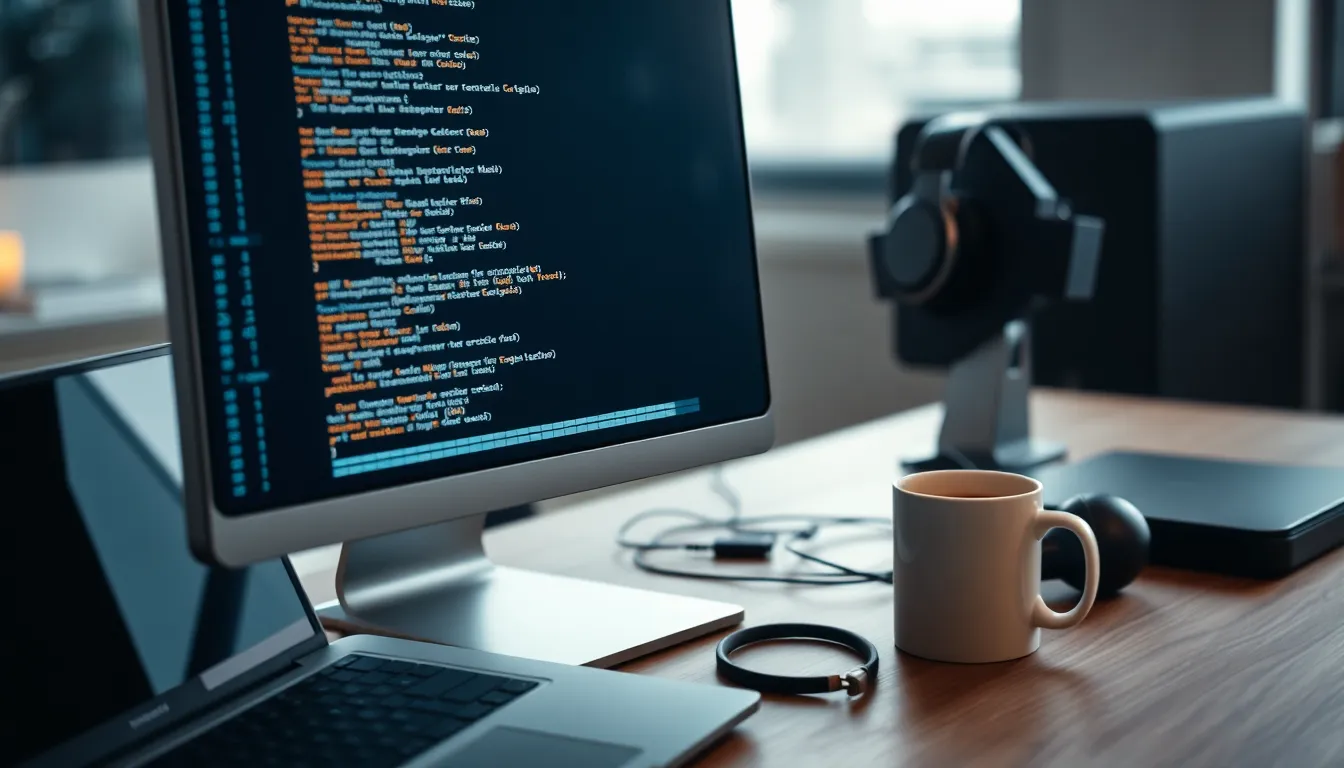In a world where every conversation could hold the next big idea or a hilarious quote, knowing how to record those chats on an iPhone is a game-changer. Imagine capturing that epic debate over pineapple on pizza or your friend’s impromptu karaoke session. With just a few taps, you can turn fleeting moments into lasting memories.
Table of Contents
ToggleOverview of Recording Conversations on iPhone
Recording conversations on an iPhone requires several methods, depending on the user’s needs. Many iPhone users utilize built-in apps like Voice Memos for quick audio captures. Apps available in the App Store, such as TapeACall and Rev Call Recorder, provide extended features for recording calls directly. Specific functionality varies from app to app, so checking each one for user reviews and ratings is beneficial.
Some applications offer editing tools after recordings, allowing users to trim or enhance audio quality. Voicemail can also be a simple solution for capturing conversations when alternate methods aren’t viable. In cases where the recording of phone calls is a priority, enabling notifications and compliance with local laws becomes essential.
Security features integrated into iOS help protect sensitive information. Users should confirm they actively secure recordings on their devices to prevent unauthorized access. Depending on local laws, asking for consent may be necessary before recording. Many jurisdictions require one-party or two-party consent for conversations.
Privacy settings on the iPhone can impact how recordings are stored. Recording settings are typically customizable, letting users decide where and how they want to save their audio files. Knowing how to navigate these settings supports smooth operation and user control. With the right tools and awareness of legal obligations, users can successfully record important conversations on their iPhones.
Using Built-in Features
iPhones come equipped with features that facilitate easy conversation recording. Users can benefit from their built-in apps like Voice Memos and Notes for seamless recording.
Voice Memos App
Voice Memos serves as an intuitive tool for capturing audio. Tap the red record button to start immediately. Users can pause and resume recordings as needed, making it flexible for various situations. Once finished, playback options allow for easy review. Additionally, recordings can be shared via email or messaging apps directly, providing convenience for users wishing to send their captured moments.
Notes App
Notes offers a unique approach for recording conversations. Users can start a new note, allowing them to type and record simultaneously. Simply tap the microphone icon to enable voice-to-text functionality. This method is helpful for capturing both audio and written information in one place. Users can organize notes easily, categorize their recordings, and synchronize them across devices using iCloud. This makes it simple to access recordings anywhere.
Third-Party Apps for Recording
Third-party apps expand opportunities for recording conversations on an iPhone. These applications often offer advanced features that built-in options may lack.
Popular Apps Recommended
TapeACall stands out with its ability to record phone calls with ease. Rev Call Recorder provides transcription services, making it useful for users who prefer written records. Other options include Otter.ai, which excels in meeting and interview scenarios, and Voice Recorder Pro, known for its user-friendly interface. Each of these apps boasts unique features, allowing users to choose based on individual preferences and recording needs.
Pros and Cons of Third-Party Apps
Using third-party apps comes with advantages and drawbacks. Convenience is a major benefit, as these apps often include user-friendly features for easy recording and sharing. Additional functionalities, like editing tools and transcription services, enhance the overall experience. However, potential drawbacks include varying compliance with local recording laws and the need for in-app purchases for premium features. Users must carefully evaluate app reliability and user reviews to make informed choices, ensuring a balance between functionality and compliance.
Legal Considerations
Recording conversations on an iPhone brings essential legal considerations. Users must adhere to laws regarding consent when capturing audio.
Consent Requirements
Consent plays a crucial role in recording conversations. Many jurisdictions require one-party consent, meaning only one participant needs to acknowledge the recording. In contrast, other areas enforce two-party consent, necessitating agreement from all involved. Prioritize understanding the specific laws applicable in the user’s region or the location where the conversation occurs. Failure to obtain necessary consent could lead to legal repercussions. When in doubt, seeking legal advice ensures compliance with applicable regulations.
Variations by State or Country
Laws regarding recording conversations differ significantly based on geographic location. In the United States, states vary from one-party to all-party consent requirements. For instance, California mandates all-party consent, while Texas only requires one-party consent. Other countries impose their regulations as well; for example, the United Kingdom follows similar guidelines, focusing on privacy rights. Awareness of these variances is vital for users to navigate legal landscapes effectively. To avoid potential issues, always verify the current laws in the specific state or country before recording.
Tips for Successful Recordings
Using a quiet environment improves audio quality during recordings. Search for a space with minimal background noise to avoid distractions in conversations. Additionally, consider the positioning of the iPhone; placing it closer to the speaker enhances sound clarity.
Turning on the airplane mode prevents unexpected interruptions from calls or messages while recording. Observing battery levels is essential; ensuring sufficient charge safeguards against abrupt stoppages.
Accessing the Voice Memos app conveniently allows for quick recordings, ensuring users capture moments without delay. Exploring app settings usually reveals features like noise reduction or audio enhancements, providing more control over sound quality.
Before starting, conducting a brief test recording can help verify clarity and volume. Observing local laws regarding consent is crucial; understanding whether one-party or two-party consent is required helps avoid legal issues.
Experimenting with different recording apps may yield better results, as some applications include special features tailored to specific needs. Prioritizing privacy settings protects sensitive information, restricting unauthorized access to recorded conversations.
Finally, regularly reviewing storage settings on the iPhone ensures there’s enough space for new recordings, while also offering options to delete or transfer old files.
Recording conversations on an iPhone opens up a world of possibilities for capturing important moments. With a variety of built-in and third-party apps available users can easily find a solution that fits their needs. Prioritizing legal compliance and understanding local consent laws is crucial to avoid potential issues.
By following best practices for audio quality and utilizing the right tools users can ensure their recordings are clear and useful. Whether it’s for personal reflection or professional purposes having the ability to record conversations enriches communication and preserves memories. Embracing these tools can lead to a more organized and insightful approach to capturing life’s fleeting moments.






